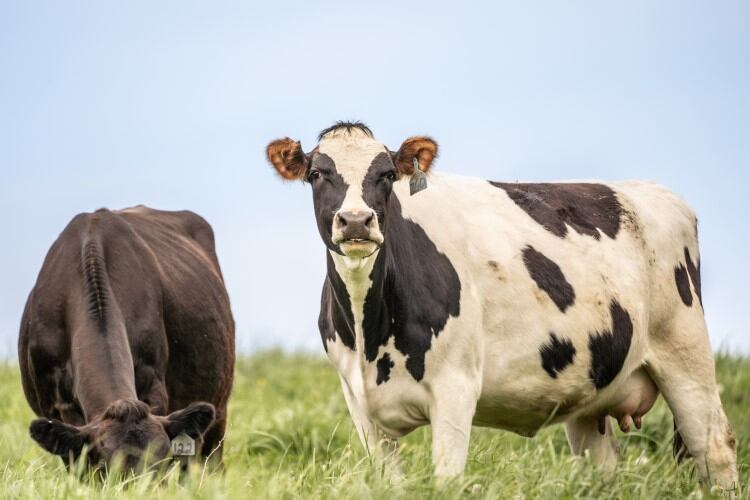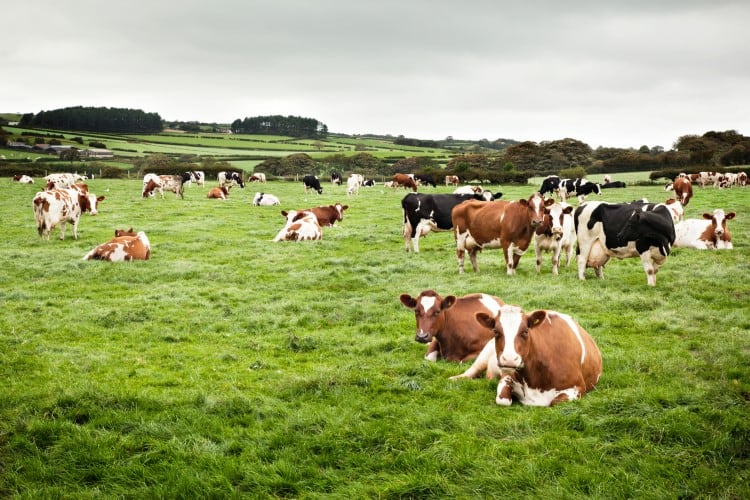The technology, which involves placing a bolus into cow’s rumen and releasing a substance that counteracts the formation of methane, has received backing by the government in the shape of a NZ$7.8m grant. Private investors as well we organizations including the Akina Foundation, Agmardt and the New Zealand Agricultural Greenhouse Gas Research Centre have also funded the project.
A bolus is a large capsule filled with a substance or medicine; it is typically inserted into the animal via injection or feed. New Zealand dairy farming is largely pasture-based, making the use of feed additives for methane mitigation impractical.
Ruminant BioTech chief executive George Reeves said the bolus has the potential to provide every dairy, sheep, and beef farmer in New Zealand with a set-and-forget methane reduction solution that is both effective and practical for grass-fed animal farming operations.
“Our slow-release bolus delivers a methane inhibitor at the site of methane production, in the rumen,” he noted. “Preliminary trials achieved 90% methane emissions reduction over 80 days. While these initial results were extremely positive, our goal is to develop a bolus that achieves 70% methane mitigation over six months.”
Questions over safety, dosage linger but ‘no cause for concern’ so far
This methane-inhibiting bolus is slated to be commercially available during 2025, granted it receives authorization for use as an animal medicine. To gather the required information, Ruminant BioTech will carry out a series of studies over the next 18 months.
One area where the company will need to demonstrate compliance is the safety of the methane suppressor. Ruminant BioTech’s bolus is filled with tribromomethane, more commonly known as bromoform. The substance is also present in seaweed, which has been used in feed to reduce methane emissions from livestock.
But prior research has indicated that bromoform could transfer into cow’s milk and urine, and that more trials need to be carried out to conclusively prove it’s safe for use in dairy cows. DairyReporter approached Ruminant BioTech’s George Reeves for comment. “We are aware of this, and note that the research was not conclusive and there were also some challenges in the feeding of the seaweed in the trial,” he said.
“We use the terminology ‘tribromomethane’ to make sure it is clearly understood the exact ingredient we are using, as bromoform is sometimes used to describe other halogenated compounds."
“[Our] tribromomethane is synthesised. One advantage of this is that we can guarantee pure tribromomethane as the active ingredient. In a regulated market, having tight control over quality and consistency is very important.” – George Reeves, Ruminant BioTech
He continued: “Seaweed does contain tribromomethane, but it also contains many additional substances, and being naturally occurring, these may vary depending on the water quality and what is found in it.”
Asked what evidence the company has gathered so far on the effects of its tribromomethane-containing bolus on milk, Reeves said ‘it’s too early’ to provide a definitive answer, adding: “We have no cause for concern in relation to food or animal safety, based on the observations from the preliminary animal studies we have conducted so far.
“What should be noted is that the Ruminant BioTech bolus will be regulated as an animal medicine, and there is a strong base of evidence of effectiveness in methane reduction and safety required by the regulators before we can get approval to market the bolus. This evidence base will be built in a series of animal studies, running over the next 18 months.”
The trials will also shed light on the dosage required to achieve optimal results. Asked if larger animals would perhaps a larger dose of the slow-release substance, Reeves said this assumption is ‘a fair one, but we do not know if it is correct'. “The studies planned for 2023 will provide the answers,” he explained. “These studies are run to the highest clinical standards by independent research organisations and include detailed monitoring of animal health and food safety.
“It is our intention that our pivotal studies to support our product registration will be peer-reviewed and published in due course.”
Reeves highlighted that if approved, the bolus could be manufactured at scale. "We can produce tens of millions of boluses easily, with low capital intensity," he added.
New Zealand’s emissions levy plans
AgMatters, a government-managed service that gathers scientific resources and information on on-farm emissions reduction, states that methane from ruminants is responsible for 71% of New Zealand’s total agricultural emissions. Dairy cows in particular produce the highest amount of methane - 98kg on average per year – compared to beef cows (61kg), sheep (13kg) and deer (25kg).
The New Zealand government aims to reduce methane emissions to 10% below 2017 levels by 2030, and between 24-47% by 2050. Since agriculture makes up around half of the country’s total emissions output, the industry has been the target of controversial legislative proposals, including plans for an ‘emissions levy’ that would force farmers to pay a fee on methane and carbon emissions from their animals.
The proposals angered advocacy group Federated Farmers, who said that if enacted, the plans would reduce the country’s dairy farming industry by 5% and sheep and beef farming by 20%. Late in December 2022, the government introduced amendments, which include an option for farmers to use on-farm forestry to offset carbon emissions.
But Federated Farmers has described the changes as ‘vague improvements’ and said that ‘large concerns and unrealistic timelines remain in place’.


